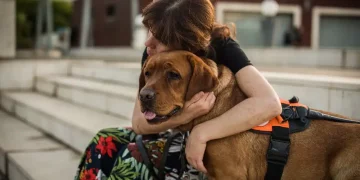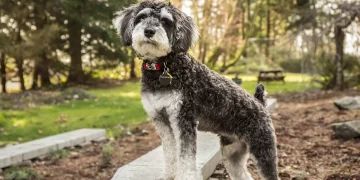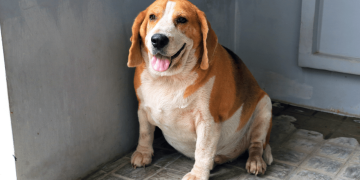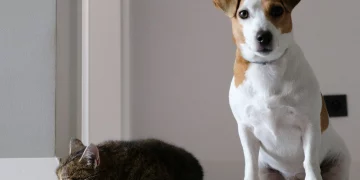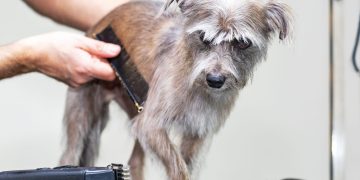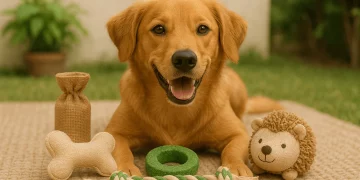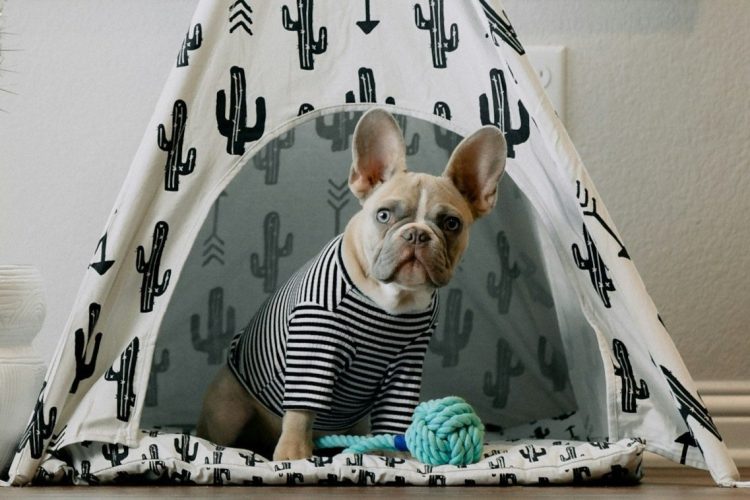Separation anxiety is a common behavioral issue in pets, particularly dogs and some cats. Pets are social animals that thrive on companionship, and the absence of their human family members can cause distress. When a pet experiences separation anxiety, they may exhibit signs such as excessive barking, howling, chewing, or even urinating and defecating inside the house. These behaviors can be frustrating for owners, but understanding the root cause and implementing appropriate training methods can help ease your pet’s anxiety and help them feel comfortable being alone.
In this article, we will explore the causes and symptoms of separation anxiety in pets, share effective training techniques to help your pet feel more secure when alone, and offer product recommendations to manage anxiety when you’re away. Whether you have a dog that struggles with being left alone or a cat that experiences distress when you’re not around, this guide will help you address and resolve separation anxiety in a positive and compassionate way.
Addressing Separation Anxiety in Pets
Separation anxiety occurs when pets become overly attached to their owners and experience extreme stress when they are left alone. It’s not uncommon for dogs and cats to feel some level of distress when their owners leave, but when that distress turns into destructive behavior or persistent crying, it indicates a deeper anxiety issue. Understanding the signs of separation anxiety and the potential triggers can help you take the right steps to help your pet.
1. Recognizing the Symptoms of Separation Anxiety
Separation anxiety can manifest in different ways depending on the severity of the issue and the type of pet. The most common signs include:
- Destructive behavior: Chewing furniture, doors, shoes, or anything they can get their paws or teeth on. This behavior is often a result of frustration and anxiety.
- Excessive vocalization: Dogs, in particular, may bark, whine, or howl for long periods when left alone. Cats may meow loudly or act out in other ways.
- House soiling: Even if your pet is house-trained, anxiety can cause them to urinate or defecate inside when left alone.
- Pacing or restlessness: Pets with separation anxiety often exhibit signs of agitation such as pacing, drooling, or constant circling.
- Self-harm: In extreme cases, pets may engage in behaviors like excessive licking, biting, or scratching at their own body due to anxiety.
- Clinginess: Pets may become overly dependent on their owners, following them around the house or being unable to settle down without constant attention.
2. Causes of Separation Anxiety in Pets
Separation anxiety can be triggered by several factors, including:
- Previous trauma or abandonment: Pets that have been abandoned, rehomed, or separated from their original owners can develop anxiety related to future separations. The fear of being abandoned again can lead to clinginess and distress.
- Change in routine: Pets are creatures of habit, and any significant change in their daily routine—such as a new work schedule for their owner, a move to a new home, or the arrival of a new family member—can cause anxiety.
- Lack of socialization: Pets that have not been properly socialized or who have had limited exposure to being alone from a young age may have difficulty adjusting to time spent alone.
- Health issues: Sometimes, health problems like pain, discomfort, or neurological conditions can cause behaviors that mimic separation anxiety. It’s important to rule out any underlying medical issues with your veterinarian.
Training Methods to Help Your Pet Feel Comfortable When Alone
Training your pet to be comfortable with being alone is a gradual process that requires patience and consistency. The goal is to help your pet associate your absence with positive experiences rather than distress. Below are effective training methods that can help alleviate separation anxiety:
1. Gradual Desensitization
One of the most effective methods for treating separation anxiety is gradual desensitization. This technique involves slowly getting your pet used to being alone in small increments of time and gradually increasing the duration. The idea is to make your absence feel like a normal, non-threatening part of their routine.
- Start with short separations: Begin by leaving your pet alone for just a few minutes at a time. This can be as simple as stepping out to check the mail or going to another room for a short period. Once your pet remains calm during these brief separations, you can gradually increase the time.
- Increase the time slowly: Once your pet is comfortable being alone for 5-10 minutes, begin extending the time to 15, 20, or 30 minutes, and eventually up to an hour or more. Always make sure your pet remains calm and relaxed during these sessions.
- Repetition is key: Repeat this process regularly, making sure to vary the time intervals and locations so that your pet doesn’t associate you leaving with specific triggers. The more consistent you are, the quicker your pet will adapt.
2. Counter-conditioning
Counter-conditioning involves changing your pet’s emotional response to being left alone. The goal is to replace negative associations (anxiety and fear) with positive ones (comfort and relaxation). This can be done by pairing your absence with something pleasant.
- Give them a special treat or toy: Before you leave, give your pet a special treat or a favorite toy that they only get when you leave. This creates a positive association with your departure. For dogs, treat-dispensing toys like Kongs filled with peanut butter or frozen treats can keep them occupied and distracted while you’re away.
- Play calming music or sounds: Leave a calming sound or music on when you leave. Many pets find comfort in hearing soft music or nature sounds. There are even pet-specific playlists available that are designed to calm anxious pets.
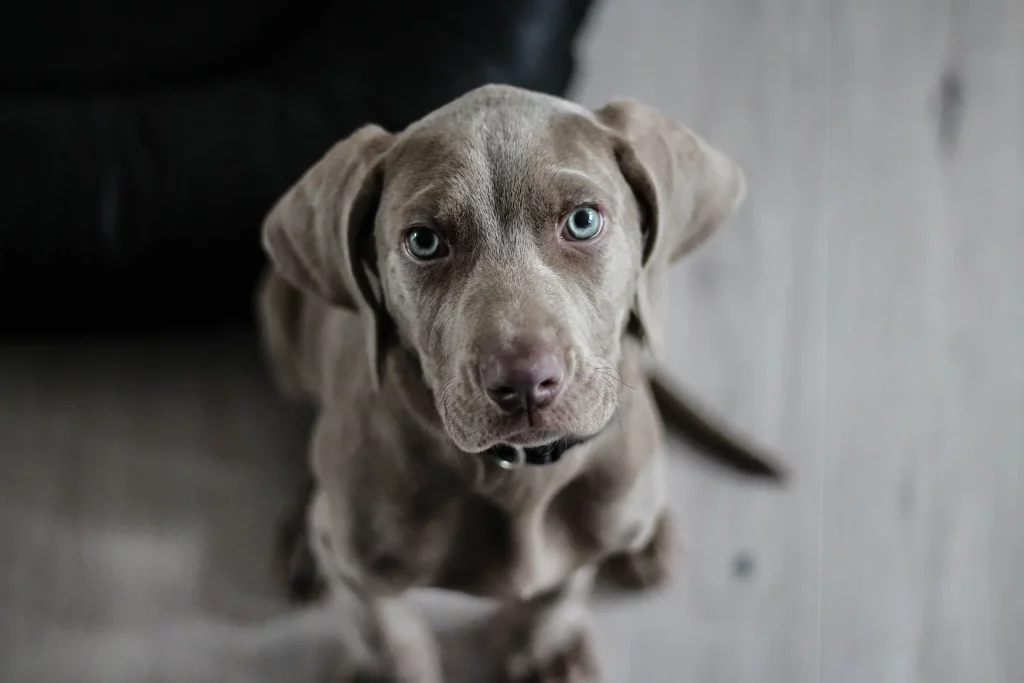
3. Create a Safe and Comfortable Space
Sometimes, simply creating a space where your pet feels safe and secure can help alleviate anxiety. The area should be quiet, cozy, and free from distractions. Here’s how to create such a space:
- Use a crate or playpen: For dogs, a crate can be a safe, den-like environment where they feel secure. Crate training, when done correctly, can help your pet associate being alone with a comfortable and familiar space. For cats, a cozy bed or hideaway space can serve the same purpose.
- Leave items that smell like you: Leaving a piece of your clothing or a blanket that smells like you can be comforting to your pet. The familiar scent can reduce feelings of anxiety when you’re not home.
- Avoid long goodbyes: When leaving, don’t make a big fuss. Long, emotional goodbyes can heighten anxiety for your pet. Instead, keep departures and arrivals low-key and matter-of-fact.
4. Positive Reinforcement and Training
Incorporating positive reinforcement into your training will help strengthen the behaviors you want to encourage. Reward your pet for staying calm when you leave and return, and avoid rewarding anxious behavior. Here’s how:
- Reward calm behavior: When you return home, wait until your pet is calm before greeting them. If you reward them while they’re anxious or hyperactive, you might inadvertently reinforce the behavior.
- Use commands: Train your pet to understand basic commands like “stay” or “settle” to help them learn to relax during your absence. The “stay” command, for example, can be used to teach your dog to remain in one place when you leave.
Products and Tips to Manage Anxiety When You’re Away
In addition to training, there are several products designed to help manage separation anxiety in pets. These products can be used in conjunction with training methods to provide additional support.
1. Calming Aids
There are various calming aids available to help reduce anxiety when you’re not around. Some of these include:
- Adaptil: This is a pheromone product designed for dogs. Adaptil mimics the calming pheromones that mother dogs produce to soothe their puppies. It comes in diffusers, sprays, and collars, and can be effective in creating a calming environment for your pet.
- Feliway: Similar to Adaptil, Feliway is a pheromone product designed for cats. It mimics the natural pheromones that cats use to mark their territory and feel safe, which can help reduce stress and anxiety.
- Calming collars: There are collars for both dogs and cats that are infused with calming herbs like lavender or chamomile. These can be a helpful addition to your pet’s routine, especially during stressful times like when you’re leaving for work.
- Anxiety wraps: Products like the Thundershirt are designed to apply gentle pressure to your pet’s body, which can help calm their nervous system. Many pets respond positively to the comfort provided by anxiety wraps.
2. Interactive Toys and Puzzles
Interactive toys and puzzles can be great distractions for pets while you’re away. These toys engage your pet’s brain, keeping them mentally stimulated and preventing boredom, which is often a major trigger for anxiety.
- Treat-dispensing toys: Toys that dispense treats as your pet interacts with them, such as Kongs, Nina Ottosson puzzles, or puzzle feeders, are excellent for keeping your pet busy and distracted.
- Automatic pet feeders: These feeders can be programmed to dispense food at set times, which can help keep your pet on a consistent schedule and reduce anxiety related to hunger.
3. Pet Cameras and Monitoring Systems
If you’re worried about your pet while you’re away, a pet camera can provide peace of mind. Some cameras, like the Furbo dog camera, allow you to interact with your pet remotely through audio and even toss treats, helping to reduce anxiety by providing reassurance
and connection.
Conclusion
Teaching your pet to be comfortable when alone requires time, patience, and consistent effort. Separation anxiety is a real and serious issue that can significantly affect both you and your pet, but with the right training and tools, you can help your pet feel more secure and relaxed during your absences. Whether through gradual desensitization, counter-conditioning, or the use of calming products, you can ensure that your pet develops healthier coping mechanisms and learns to be at ease when left alone.
With a compassionate approach and the right resources, you can help your pet build confidence and independence, making both your lives easier and more enjoyable. And remember, if your pet’s anxiety seems particularly severe or unmanageable, it’s always a good idea to consult with a veterinarian or a professional dog trainer to get additional support and guidance.




